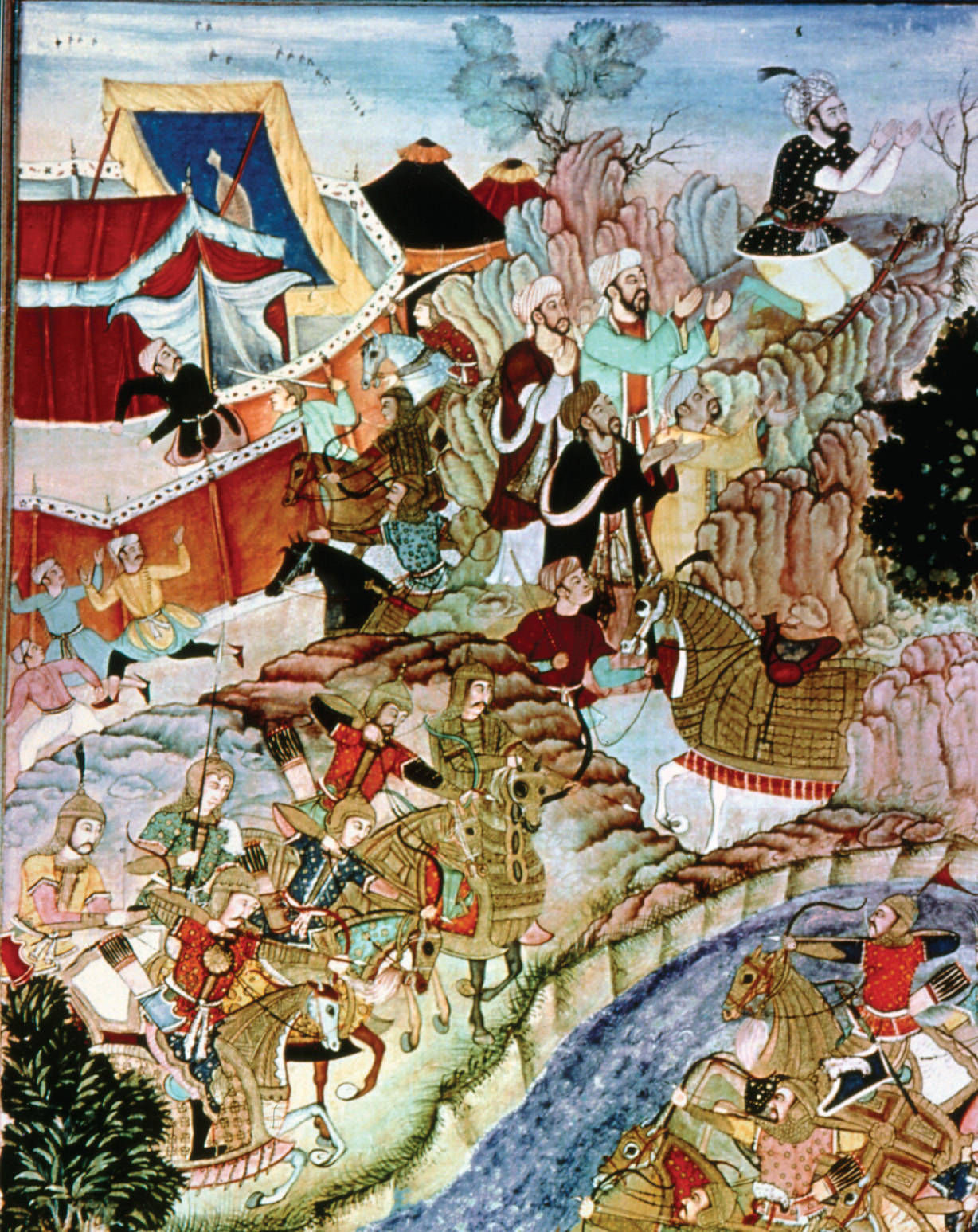Introduction
CHAPTER ELEVEN
Pastoral Peoples on the Global Stage
The Mongol Moment
1200–1500

In 1937, the great Mongol warrior Chinggis Khan (CHEEN-gihs kahn) lost his soul, some seven centuries after his death. According to Mongol tradition, a warrior’s soul was contained in his spirit banner, consisting of strands of hair from his best horses attached to a spear. For many centuries, Chinggis Khan’s spirit banner had been housed in a Buddhist monastery in central Mongolia, where lamas (religious teachers) had tended it.1 But in the 1930s, Mongolia, then under communist control and heavily dominated by Stalin’s Soviet Union, launched a brutal anti-religious campaign that destroyed many monasteries and executed some 2,000 monks. In the confusion that ensued, Chinggis Khan’s spirit banner, and thus his soul, disappeared.
By the end of the twentieth century, as communism faded away, the memory of Chinggis Khan, if not his spirit banner, made a remarkable comeback in the land of his birth. Vodka, cigarettes, a chocolate bar, two brands of beer, the country’s best rock band, and the central square of the capital city all bore his name, while his picture appeared on Mongolia’s stamps and money. Rural young people on horseback sang songs in his honor, and their counterparts in urban Internet cafés constructed Web sites to celebrate his achievements. The country organized elaborate celebrations in 2006 to mark the 800th anniversary of his founding of the Mongol Empire.
SEEKING THE MAIN POINT
What has been the role in world history of pastoral peoples in general and the Mongols in particular?
ALL OF THIS IS A REMINDER OF THE ENORMOUS AND SURPRISING role that the Mongols played in the Eurasian world of the thirteenth and fourteenth centuries and of the continuing echoes of that long-vanished empire. More generally, the story of the Mongols serves as a useful corrective to the almost exclusive focus that historians often devote to agricultural peoples and their civilizations, for the Mongols, and many other such peoples, were pastoral nomads who disdained farming while centering their economic lives around their herds of animals. Normally they did not construct elaborate cities, enduring empires, or monumental works of art, architecture, and written literature. Nonetheless, they left an indelible mark on the historical development of the entire Afro-Eurasian hemisphere, and particularly on the agricultural civilizations with which they so often interacted.
A Map of Time
| ca. 4000 B.C.E. | Beginning of pastoral economies |
| ca. 1000 B.C.E. | Beginning of horseback riding |
| ca. 200 B.C.E.–200 C.E. | Xiongnu Empire |
| 6th–10th centuries | Various Turkic empires |
| 7th–10th centuries | Arab Empire |
| 10th–14th centuries | Conversion of Turkic peoples to Islam |
| 11th–12th centuries | Almoravid Empire |
| 1162–1227 | Life of Temujin (Chinggis Khan) |
| 1209–1368 | Mongol rule in China |
| 1237–1480 | Mongol rule in Russia |
| 1241–1242 | Mongol attacks on Eastern Europe |
| 1258 | Mongol seizure of Baghdad |
| 1274, 1281 | Failed Mongol attacks on Japan |
| 1295 | Mongol ruler of Persia converts to Islam |
| 1348–1350 | High point of Black Death in Europe |